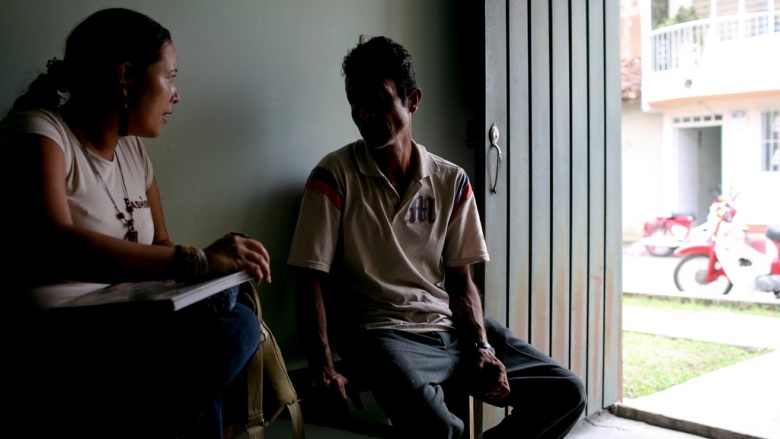Challenge
Income inequality in Colombia remains high, despite recent strong macroeconomic performance, significant reductions in poverty, and improvements in social indicators. Between 2002 and 2012, moderate poverty based on monthly income fell from 49.7 to 32.7 percent, while extreme poverty declined from 17.7 to 10.4 percent. However, the rate of poverty reduction was constrained by high inequality and was relatively unresponsive to growth, falling below Colombia’s regional peers Argentina, Brazil, and Mexico. The country’s Gini coefficient, the international measure of income distribution, was higher than the regional average for Latin America and Caribbean and among the ten highest in the world. In addition, Colombia's overall fiscal system (taxes and transfers) showed a limited redistributive capacity, even compared to neighboring countries.
Solution
The World Bank financed Enhancing Fiscal Capacity to Promote Shared Prosperity Development Policy Loan supported the government’s reforms to reduce income inequality and improve overall equity in several dimensions. The reforms were aimed at (i) improving the progressivity of the tax system and reducing the cost of formal employment creation, (ii) reducing territorial inequities by establishing a more equitable decision-making process for regional investment projects, (iii) reducing gender inequities by improving the government’s capacity to protect victims of gender-based violence, (iv) improving the targeting of expenditures to protect vulnerable groups, such as subsidies to the elderly, (v) enhancing the transparency and coverage of the national financial management information systems, and (vi) enhancing the transparency, quality of information, and governance of the monitoring system that measures poverty, equity, and other social welfare indicators.
Results
- Reforms to improve the progressivity of the income tax levied higher tax rates on the top .4 percent of earners.
- Tax reforms to create jobs and promote hiring in the formal sector appear to have had positive impacts.
- Payroll taxes were reduced to alleviate the tax burden on the labor sector and provide incentives for corporations to increase hiring. In addition, a new corporate tax, CREE, was introduced to shift the income tax burden from labor to capital. The CREE also shifted the burden from companies in labor-intensive industries to those in highly profitable and capital-intensive industries (such as oil and gas).
- The 2011 reform of the General Royalty System (SGR) substantially enhanced the territorial equity in the distribution of royalties. Before the reform, 80 percent of the royalties were allocated exclusively among the producing territorial entities, benefiting 522 municipalities. Under the new SGR, royalties now benefit 1,089 municipalities across the country.
- Increased funding for the Colombia Program for the Elderly more than doubled the number of elderly beneficiaries between 2012 and 2014.
- Efforts to improve transparency and accountability in the execution of the public budget have made substantial progress.
- Changes to the official methodology to measure poverty enhanced the credibility and clarity of official poverty measurements.
Bank Group Contribution
The Bank’s Development Policy Loan totaled US$600 million.
Partners
- National Statistics Bureau
- Tax and Customs Directorate
- National Planning Ministry
- Ministry of Finance and Public Credit
Moving Forward
This operation is part of the Bank’s long-term engagement with Colombia, including lending operations, knowledge products, and technical assistance. This engagement coincides with the government’s ongoing commitment to improve equity, as measured by a decline in the Gini coefficient from 0.54 to 0.52, described in the country’s 2014-2018 National Development Plan (NDP).
Beneficiaries
The citizens of Colombia benefited from this loan through the public administration reforms promoting open access to the government’s financial management information systems and an enhanced poverty monitoring system. An additional 742,749 elderly citizens became eligible and received subsides from Colombia’s leading elderly program. The citizens of an additional 567 municipalities across all departments received royalty funds to support regional investment projects.
